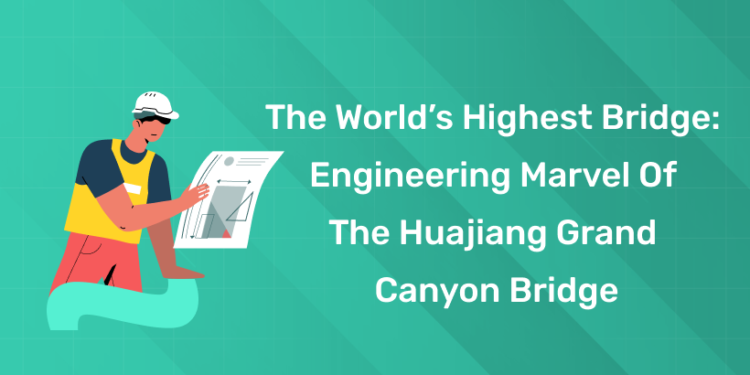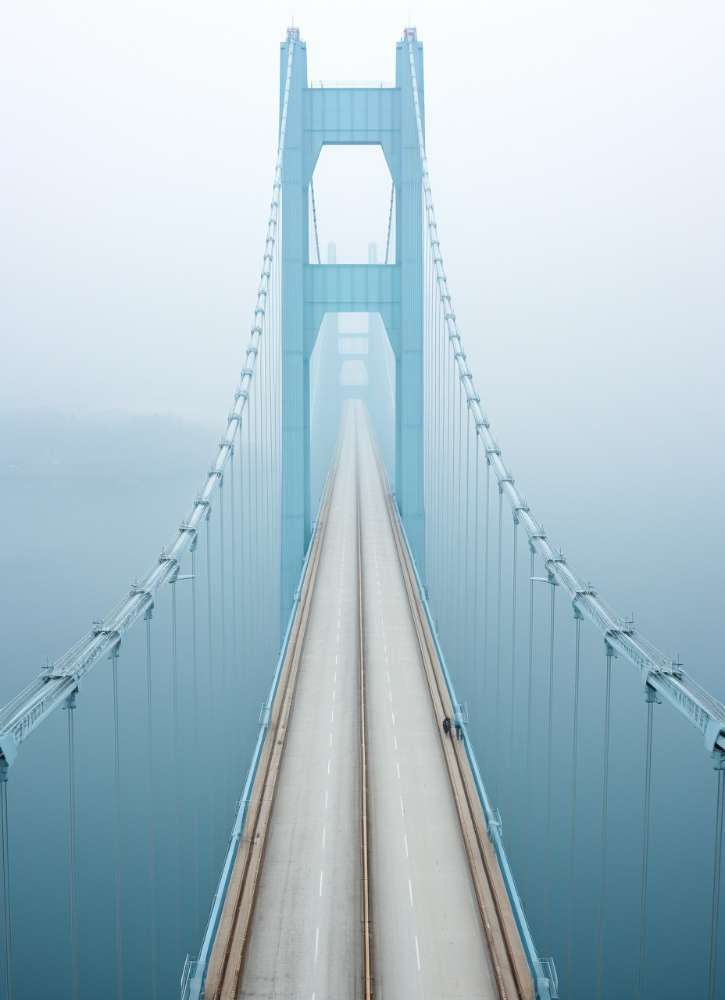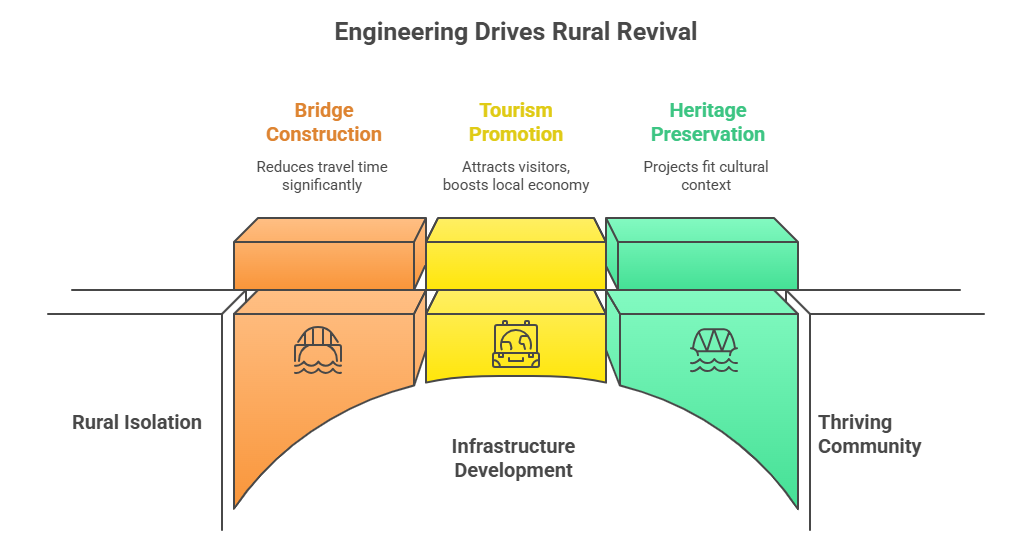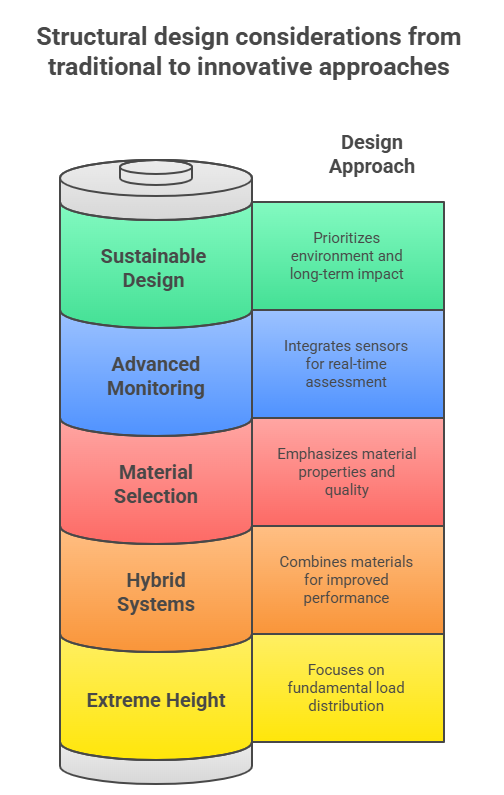Table of Contents
The Huajiang Grand Canyon Bridge is a masterpiece of modern engineering and proof of humans’ ability to overcome extreme geography. For civil engineers, it’s a case study of advanced bridge design, construction logistics, material technology, and tourism and local development.
This in-depth blog post will go through the history, challenges, achievements, and engineering insights of the world’s highest bridge.
Setting a New Standard for Civil Engineering
The Huajiang Grand Canyon Bridge in Guizhou Province, China, has just been completed and is now the highest bridge in the world, with a drop of 625 meters from deck to gorge floor. It’s a new era for civil engineering by combining innovative design with social transformation, an inspiration for civil engineers now and in the future.
Understanding the Huajiang Grand Canyon Bridge
1: What is the primary purpose of structural design?
Project Location and Purpose
- Location: Spanning China’s Beipan River within the rugged terrain of the Huajiang Grand Canyon, Guizhou.
- Purpose: Engineered to revitalize a remote region, promote tourism, and radically reduce travel time from over an hour to just under two minutes for locals and travelers.
- Opening Date: Officially opened on 28 September 2025, after a landmark three-year construction period.
Bridge Type and Scale
- Structure: Steel-truss girder suspension bridge.
- Total Length: 2,890 meters.
- Main Span: 1,420 meters, making it one of the world’s longest suspension bridge spans.
- Height: Towers rise 262 meters. The deck sits 625 meters above the gorge floor, setting a world record.
Transform Your Career with Our Structural Design Course!
Unlock Your Potential in Structural Design! Gain expert knowledge in designing robust structures and advance your career in the construction and engineering fields. Limited spots available! 🌟
Know MoreProject Background: Engineering Ambition Meets Community Needs
Historically Isolated, Now Connected
Guizhou Province is characterized by a jagged karst landscape, which long isolated its towns and villages. The bridge now enables seamless expressway transit and supports the region’s efforts to break free from its economic isolation.
Multi-Functional Design for Modern Demands
More than a transport structure:
- Built with facilities for extreme sports, glass walkways, and a specialty coffeehouse at the summit.
- Integrated into a 50km² tourism and recreational zone, blending civil, social, and economic functions seamlessly.
For civil engineers, this offers valuable insights into multidisciplinary infrastructure planning, showing that modern structures must serve both mobility and vibrant local economies.
Construction Challenges and Triumphs
Engineering Obstacles
- Karst Terrain: Complex, unstable rock formations required advanced geological surveys and tailored foundation solutions.
- Altitude and Access: Workers and equipment faced elevated risks due to drastic altitudes and remote access.
- Climate: Construction crews braved both scorching heat and biting cold, keeping operations precise year-round.
Innovations in Structural Design
- Steel Truss System: Long-span steel truss girders provide both lightness and extreme load-bearing capacity, perfect for spanning vast canyons.
- Gigantic Towers: At 262 meters, the bridge towers rank among the tallest in the world, demanding complex wind and seismic analysis.
- Embedded Monitoring: Fiber optic load cell cables installed within the main cable strands offer real-time structural health monitoring, supporting proactive maintenance and safety.
For civil engineers, these details highlight the importance of both traditional and digital tools for ambitious project delivery.
Social and Economic Impact: Engineering for People
Rural Revival
Locals who used to drive on bumpy roads for hours, now it’s minutes, so young people are coming back and outside investors are financing homestays and hospitality.
Tourism and Hospitality
- The bridge was a smash, welcoming over 100,000 visit during its inaugural holiday week.
- Glass walkways, bungee jumping platforms and cafes with panoramic views all create new revenue and new education.
Preserving Heritage
Cultural heritage also riddles the Huajiang area, from the ancient Tea Horse Road and rock carvings, to antique chain bridges, so civil engineers must ensure that projects fit the cultural context.
Transform Your Career with Our Structural Design Course!
Unlock Your Potential in Structural Design! Gain expert knowledge in designing robust structures and advance your career in the construction and engineering fields. Limited spots available! 🌟
Know MoreConstruction Methods and Logistics
Building a bridge of this magnitude in rugged terrain demands specialized construction strategies.
Sequential Erection
- The deck was assembled in sections. A large steel truss girder weighing about 215 tonnes was hoisted into place.
- Use of cable cranes and gantry systems adapted for high altitude and steep drop-offs to lift heavy steel components safely.
Material Transport and Local Sourcing
- Steel mostly produced locally (Shougang) to reduce transport distance and costs. Around 75% of steel consumption came from Shougang’s supplies.
- Using local stone or concrete mixes adapted to environment, possibly including high-cement concrete, to improve compressive strength under harsh conditions.
Safety and Quality Control
- Millimeter-level precision required in tower construction, cable tensioning, girder placement.
- Weather constraints: wind, rainfall and temperature influence operations. Some work likely delayed or timed for favourable weather windows.
- Rigorous load testing before opening: multiple trucks, sensors, monitoring.
Performance and Operational Considerations
From design to opening, civil engineers must ensure that the bridge not only meets initial performance but sustains operational reliability.
Load Capacity and Traffic Design
- Designed to carry 4 lanes of highway traffic plus pedestrian/tourist-oriented features (viewing platforms). The traffic loads include dynamic loads from vehicles, occasional heavy trucks.
- Factor of safety in design to account for overload, fatigue, material degradation.
Environmental Effects and Durability
- Exposure to moisture, possibly corrosive elements, UV, temperature swings: steel corrosion protection, coatings, weathering steel parts or galvanization.
- Maintenance access to towers, cables, deck to inspect and repair.
Seismic and Wind Resistance
- Guizhou region is mountainous and might have seismic risk. Structural design must conform to seismic codes, provide ductility in supports, flexible connections, and damping.
- Wind load design: towers slender, tall; deck and truss must not flutter; cable vibrations; possibly tuned mass dampers or aerodynamic features incorporated.
Monitoring and Lifecycle Management
- Embedded sensors (e.g. fibre-optic, strain gauges) feed continuous data to detect stress or deformation.
- Scheduled inspections, maintenance of cable anchorages, joints, and expansion joints.
Implications for Structural Design Education & Practice
For civil engineers, especially those specializing in structural design, Huajiang Grand Canyon Bridge offers lessons across multiple dimensions.
Designing for Extreme Height and Span
It is one thing to design a suspension bridge; to design one with deck height of 625 m and span of 1,420 m in rugged terrain is another level. The interplay between tension, compression, bending, wind, and thermal effects becomes critical.
Hybrid Structural Systems
Using steel truss stiffening in conjunction with suspension cable support allows distribution of loads and improves stiffness. Structural designers need to be adept with these hybrid systems.
Material Selection and Quality Assurance
High-strength steel performance, fatigue life, corrosion resistance, and exacting tolerances are all essential. Material suppliers and QA labs must follow strict standards.
Advanced Monitoring and Smart Structures
Real-time monitoring, sensor data, and smart cable systems help in predictive maintenance and safety. Modern structural engineering education must include sensor integration, data-driven assessment, and structural health monitoring.
Sustainable and Context-Sensitive Design
Considering local geology, minimizing environmental impact, using local materials where possible, designing for long life with minimal maintenance, these are increasingly important.
Learn structural design from industrial experts! Join Entri Elevate Structural Design Online Course!
Technical Details and Achievements for Engineers
Key Metrics
| Feature | Specification |
| Main Span | 1,420 meters |
| Deck Height | 625 meters |
| Total Length | 2,890 meters |
| Tower Height | 262 meters |
| Opened | September 28, 2025 |
| Load Test | August 2025 |
| Roadway | Guizhou S57 Expressway |
| Monitoring | Fiber optic load cell cable |
Highlighted Innovations
- The design embedded tourism, science education, and recreation from inception.
- Glass-bottomed walkways and adventure sports platforms required special attention to vibration, wind dynamics, and user safety.
- The bridge’s monitoring technology is a model for smart infrastructure worldwide.
Lessons for Civil Engineers
Multidisciplinary Collaboration
This project exemplifies engineers working with geologists, tourism planners, community leaders, and IT system experts, an integrated approach all future engineers need to master.
Real-Time, Data-Driven Maintenance
Live fiber optic monitoring puts structural safety into a new digital paradigm, reducing maintenance costs and risks.
Advancing the Profession with Targeted Upskilling
Civil engineering is evolving rapidly, and mastering structural design for projects at this scale is vital. Enrolling in specialized programs, particularly those utilizing real-world case studies and digital simulation, is recommended.
Watch the content in video format here:
Key Takeaways for Civil Engineers
- The Huajiang Grand Canyon Bridge sets new records for civil height and main span while demonstrating successful integration into local development and tourism.
- Advanced structural strategies and digital health monitoring were essential to overcoming enormous site and design challenges.
- Successful mega-projects need close partnership between civil, social, and economic disciplines, embodying a model for modern engineering careers.
- Civil engineers who learn from landmark achievements like Huajiang will bring resilient, sustainable, and people-centered infrastructure to the world.
Aspiring to build or design record-breaking structures? Dive into next-generation training with the Entri Structural Design Course and prepare to shape tomorrow’s skylines. If you seek more information on bridge design, digital monitoring, or infrastructure planning, ask for personalized recommendations or guidance.
Conclusion
Huajiang Grand Canyon Bridge is not just a masterpiece, it challenges the structural engineering of difficult terrain. The bridge’s extreme height, extended span, material innovation and control quality makes it a model of the next generation of bridges worldwide.
It is an inspiration and benchmark for civil engineers. There are lessons not only in calculating stresses or choosing materials, but in paralleling geography, environment, design innovation, construction logistics, and long-run safety.
If you want to work in a similar project, you should know how to design structures. Consider enrolling in courses like Entri’s Structural Design Course. One such course will not just give you technical knowledge, but will help you to make meaningful contributions to the future generations of engineering marvels.
Transform Your Career with Our Structural Design Course!
Unlock Your Potential in Structural Design! Gain expert knowledge in designing robust structures and advance your career in the construction and engineering fields. Limited spots available! 🌟
Know MoreFrequently Asked Questions
What makes the Huajiang Grand Canyon Bridge the highest bridge in the world?
The Huajiang Grand Canyon Bridge holds the title of the highest bridge in the world at a remarkable height of 625 meters above the Beipan River. This unprecedented height, coupled with its suspension design, enables it to cross one of the deepest canyons, making it a global landmark in bridge engineering.
What are the main engineering challenges faced in the construction of the world’s highest bridge?
Engineers encountered challenges such as managing high wind speeds, geological instability, and landslide risks while constructing the Huajiang Grand Canyon Bridge. Advanced foundation techniques, aerodynamic designs, and seismic considerations were used to overcome these obstacles and ensure the bridge’s stability and safety.
How did the Huajiang Grand Canyon Bridge become a significant achievement in civil engineering?
The world’s highest bridge represents the pinnacle of modern civil engineering. With its innovative suspension design and ability to withstand extreme environmental factors, it has set new standards for high-altitude bridge construction, inspiring civil engineers globally to push the boundaries of bridge engineering.
How can the Entri Structural Design Course help civil engineers working on projects like the Huajiang Grand Canyon Bridge?
Entri’s Structural Design Course provides civil engineers with in-depth knowledge of bridge design, geotechnical engineering, material science, and structural analysis, equipping them with the skills necessary to take on complex, large-scale infrastructure projects like the Huajiang Grand Canyon Bridge.
What role does the bridge play in tourism and transportation in China?
The Huajiang Grand Canyon Bridge significantly reduces travel time in the region, enhancing connectivity between remote areas of Guizhou Province. The bridge has also boosted tourism, offering stunning views and activities like bungee jumping and slacklining, attracting visitors from around the world.


















